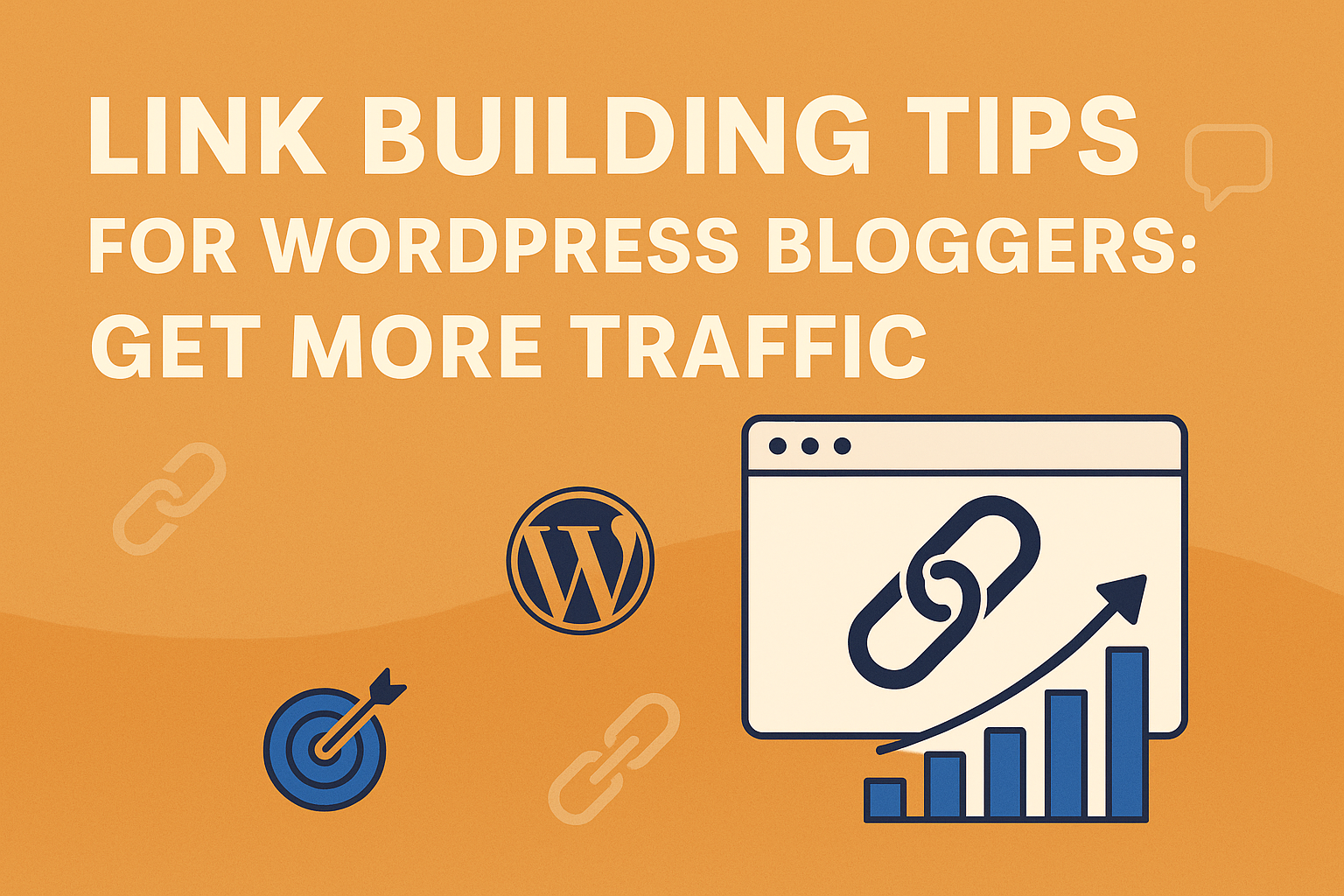Link building is a powerful way to increase your blog’s visibility—especially on WordPress. At its core, link building means earning hyperlinks from other websites to your own. These links signal credibility to search engines like Google and allow referral visitors to find you. For WordPress bloggers, a smart link building strategy can boost domain authority, raise SEO rankings, and drive a steady flow of organic traffic.
In this post, you’ll discover actionable link building tips for WordPress bloggers that can help you get noticed, grow your audience, and build a stronger presence online. Let’s dive in!
What Is Link Building?
Link buildingrefers to the process of acquiring backlinks—hyperlinks from other websites—to your own. There are three core types:
- Internal links: Links between posts/pages within your own WordPress blog.
- External links: Links from your blog to other websites.
- Backlinks: Links from external sites to your WordPress blog.
Google and other search engines use backlinks as a trust signal. High‑quality backlinks indicate that your content is valuable, boosting your chances of ranking higher in search results.
Why Link Building Matters for WordPress Bloggers
Link building isn’t just about SEO; it also:
- Improves domain authority – More quality backlinks = higher authority.
- Boosts rankings – Backlinks help your posts appear higher in search results.
- Drives referral traffic – Visitors click through to your site via those links.
- Speeds up indexing – Search engine crawlers follow links to discover new content faster.
- Enhances credibility – Being referenced by other blogs gives social proof.
Top Link Building Tips for WordPress Bloggers
1. Create High‑Quality, Shareable Content
- Write comprehensive guides (how‑tos, tutorials, case studies).
- Use original data or research—people link to stats and findings.
- Make content visually rich with images, infographics, charts, and tables.
- Publish evergreen content: posts that remain relevant long-term.
- Add embed codes for infographics to encourage sharing.
Tip: Content that educates or solves a problem often earns the most backlinks.
2. Use Guest Blogging to Build Authority
- Research niche blogs or industry sites that accept guest posts.
- Pitch fresh topic ideas with value for their audience.
- Include one or two relevant anchor text backlinks to your blog.
- Focus on quality—choose authoritative sites with high engagement.
- Write an engaging author bio that encourages readers to click through.
3. Comment on Relevant Blogs (Without Spamming)
- Identify popular WordPress blogs in your niche.
- Leave thoughtful comments that add value, not just generic “great post” remarks.
- Naturally link to your blog when relevant (e.g., linking to a detailed tutorial you wrote).
While no‑follow comments don’t pass SEO juice, they drive referral traffic and build connections in your blogging community.
4. Leverage Broken Link Building
- Use tools (Ahrefs, SEMrush, or Broken Link Checker) to scan relevant sites for broken links.
- Reach out to the site owner, politely pointing out the broken link.
- Suggest your own relevant post as a replacement.
- Provide a direct URL—make it easy for them to update.
5. Reach Out for Backlinks (Outreach Strategy)
- Compile a list of blogs or websites where your content would fit naturally.
- Personalize outreach emails: Highlight what you love about their site, and how your post adds value.
- Offer to write a guest post or ask if they’d link to your useful content.
- Don’t spam—target only relevant sites with your best content.
- Use tools like BuzzStream or BuzzSumo to manage campaigns and track replies.
6. Submit to WordPress Blog Directories
- Submit your site to reputable directories like:
- WordPress.com Reader
- AllTop
- Blogarama
- Technorati
- Include a strong description and correct categorization.
- Check that the directory provides a do‑follow link to your blog.
7. Use Internal Linking Wisely
- Use keyword‑rich anchor text to link internally.
- Link new posts to relevant older ones and vice versa.
- Add a “Related Posts” section to the end of each article.
- Internal linking distributes authority and helps search engines navigate site structure.
8. Optimize for Social Sharing
- Add social sharing buttons to your posts using plugins (Monarch, ShareThis, Social Warfare).
- Create click-worthy headlines and social-media‑friendly images.
- Share your content across platforms and encourage readers to share it too.
9. Build Relationships in Your Niche
- Engage with other bloggers via Twitter, LinkedIn, Facebook groups.
- Collaborate on roundups, joint webinars, or podcasts.
- When you feature influencers in your posts, they often link back to your post when sharing.
Best WordPress Plugins for Link Building
- Rank Math: Offers built‑in suggestions for internal linking and outbound SEO.
- All in One SEO (AIOSEO): Helps manage sitemaps, internal links, and provides backlink insights.
- Broken Link Checker: Scans your site for broken outbound links and missing images.
- Yoast SEO: Suggests internal links and helps set canonical URLs.
- Pretty Links: Helps create clean, shareable URLs for outreach and affiliate content.
Common Link Building Mistakes to Avoid
- Ignoring relevance – Backlinks from irrelevant sites add little value.
- Over‑optimizing anchor text – Too many exact‑match anchors can hurt SEO.
- Neglecting internal linking – Don’t let posts sit isolated without connections.
- Forgoing outreach personalization – Generic emails get ignored.
Conclusion & Call to Action
Link building is not a quick fix—it’s a long-game strategy that builds momentum over time. By creating valuable content, guest posting, broken link outreach, internal linking, and engaging with your community, you’ll gradually earn high-quality backlinks, which translate into better SEO and more organic traffic.
Choose one or two tips from this guide—maybe broken link building or strategic guest posts—and start this week. Track your progress using Google Analytics and Search Console to see which links bring the most value.
Have a favorite link building strategy? Drop it in the comments below—I’d love to hear what’s working for you!


